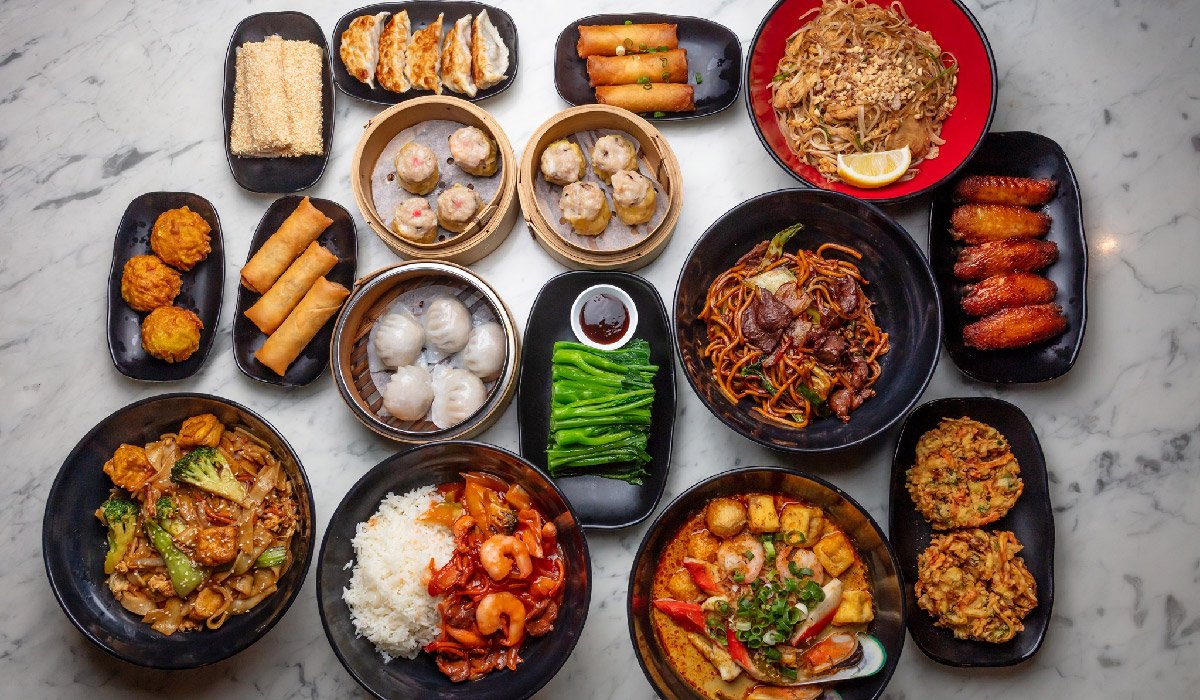Blog
Xuebaotou: The Powerful Student Symbol Changing Education Culture

Introduction
If you have ever scrolled through Chinese student forums late at night, you might have noticed a cartoon face with oversized glasses, anxious eyes, and a pile of books stacked dangerously high beside it. Sometimes it wears a headband with motivational words like “加油” (keep going) or “高考必胜” (victory in the national exams), while other times it is shown sweating, yawning, or half asleep at a glowing laptop. For many outside of China, the image looks odd, funny, and maybe a little sad, leading to the natural question: who is this character? The answer is Xuebaotou (学宝头), a symbolic digital persona born out of student culture, exam pressures, and online creativity.
While it may look like just a cartoon, the meaning runs much deeper. Xuebaotou has grown into a cultural icon representing overachieving students, study struggles, and the weight of academic expectations in modern East Asia. This article explores everything about Xuebaotou — its origins, meaning, cultural background, role in online life, psychological impact, criticisms, and even its potential global future — showing why a funny little drawing matters so much in today’s student world.
Etymology, Naming & Semantic Layers
The word Xuebaotou (学宝头) comes from three characters: “学” (xue) meaning study or learning, “宝” (bao) meaning treasure or something precious, and “头” (tou) meaning head. Taken literally, it might sound like “study treasure head,” which makes little sense in English. But in Chinese slang, the combination forms a persona rather than a direct translation. Xuebaotou is essentially the “study darling,” the archetypal student who is prized for being diligent, smart, and endlessly dedicated to books.
The term first appeared on online forums and study communities around the late 2010s, where students jokingly called themselves Xuebaotou when describing sleepless nights spent memorizing textbooks. Over time, the phrase gained traction and shifted from a self-deprecating joke to a widely recognized cultural symbol. Variants exist, including playful abbreviations or nicknames, but the core meaning remains the same: a head filled with study, a student defined by academics, and a symbol of both aspiration and exhaustion.
Historical & Cultural Context
To understand why Xuebaotou resonates so strongly, it is important to look at the wider cultural history of education in China and East Asia. In societies deeply shaped by Confucian values, scholarly achievement has always been central. From the imperial examination system to today’s highly competitive national college entrance exam (Gaokao), education has been a primary route to status, respect, and opportunity. Modern Chinese students grow up in an environment where test results often determine their entire future, and the expectations of parents, teachers, and peers weigh heavily.
The one-child policy intensified this dynamic for decades, concentrating all parental hopes on a single child. Alongside this cultural weight came the rise of shadow education — after-school tutoring, cram schools, and online platforms designed to push students further. By the 2010s, youth culture and digital connectivity mixed these pressures with meme culture, producing humorous yet painfully honest characters like Xuebaotou that embody both the glory and the misery of relentless studying.
Xuebaotou as a Digital Persona / Iconography
Xuebaotou is not just a word but a visual identity that appears across countless memes, stickers, and gifs. The standard look features a cartoonishly large head, wide or weary eyes hidden behind thick glasses, and symbols of academic life like headbands, textbooks, or glowing laptops. Sweat drops or under-eye circles are often added to emphasize stress and sleeplessness. Some drawings include clocks striking midnight or motivational banners hanging behind the character.
On platforms like Bilibili, Zhihu, and Tieba, these depictions are widely used to illustrate everyday student struggles. A common meme shows Xuebaotou dozing off on a desk with the caption “还没复习完” (still not finished revising). Others portray the character giving advice, cheering peers on before exams, or breaking down after a tough test. Through these images, Xuebaotou became a flexible icon — sometimes funny, sometimes serious, but always instantly recognizable to anyone who has endured the grind of academic competition.
Functions & Roles in Student Identity
The popularity of Xuebaotou stems from how deeply it connects with student identity. For many, using the character is a way to express their daily reality without words. Sharing a meme of Xuebaotou struggling with piles of homework allows students to bond over common stress, turning isolation into solidarity. In this sense, it acts as a coping mechanism: by laughing at their own suffering, students feel less alone. Beyond humor, Xuebaotou also works as motivation.
Online study groups often use it as a mascot during challenges, where students commit to hours of focused revision. Educational apps have adopted the imagery too, making Xuebaotou a brand symbol of discipline and progress. This dual role — both comic relief and serious emblem — explains why the figure spread so widely. Students recognize themselves in it, mock themselves through it, and even find strength in its relentless determination.
Psychological, Social, and Educational Effects
However, embodying Xuebaotou is not without consequences. Psychologists point out that the archetype reflects both admiration and anxiety. On the positive side, students feel encouraged by identifying with Xuebaotou, gaining a sense of pride in effort and belonging to a community of peers striving for success. Yet the risks are significant. The image also normalizes perfectionism, where students believe they must always study harder or longer.
Many report feelings of imposter syndrome, fearing they are not “real Xuebaotou” unless they sacrifice sleep and leisure. This contributes to burnout, isolation, and mental health struggles, especially in a culture where seeking help is often stigmatized. Teachers have noted that referencing Xuebaotou in class can open discussions about stress, but without guidance, it can reinforce the very pressures students seek to manage. Thus, the character is both healing and harmful, depending on how it is used and interpreted.
Comparisons & Contrast: Xuebaotou vs. Other Archetypes
Xuebaotou is part of a wider ecosystem of digital archetypes in Chinese youth culture. In contrast to the “sang” culture youth (丧文化) who embrace pessimism and hopelessness, Xuebaotou remains driven and ambitious. Against the “lying flat” (躺平) movement, where young people refuse to compete and opt for rest, Xuebaotou represents relentless effort within the system.
Compared to “neijuan” (内卷) warriors, who burn out from endless competition, Xuebaotou embodies a more self-aware version of the grind — one that laughs at itself but still pushes forward. Internationally, similar archetypes exist: in Japan, the “benkyou mania” (study fanatic); in India, memes about JEE or NEET prep; in the United States, the overachiever stereotype tied to AP classes and Ivy League aspirations. What makes Xuebaotou unique is its blend of satire and sincerity, showing both the ridiculousness and the necessity of academic devotion.
Media, Merchandise & Commercialization
The popularity of Xuebaotou has quickly moved beyond forums and memes into tangible products and commercial use. Educational platforms like Xueersi and various MOOC apps adopted Xuebaotou-like mascots in their advertisements, portraying it as a friendly study companion. Campus bookstores now sell notebooks, posters, and stationery featuring the character’s face. On messaging platforms like WeChat, animated stickers of Xuebaotou yawning or cheering are commonly exchanged before exam periods.
Even AI learning assistants have been designed with avatars inspired by Xuebaotou, creating a digital tutor that feels relatable. The commercialization is double-edged: while it spreads recognition and gives students comforting icons, it also risks reducing a complex student identity into a marketable brand, blending genuine expression with corporate profit.
Global Reach & Localization
Although born in China, Xuebaotou resonates far beyond national borders. The pressures of academic competition are universal, and students worldwide recognize the same struggles. In South Korea, intense exam culture produces characters with similar features of overwork. In India, competitive test memes portray students buried under books, echoing Xuebaotou’s imagery. In the West, while the style is different, high school and college memes about AP classes, SAT prep, or Ivy League stress mirror the same emotions.
Localization may change the look — different languages, different symbols — but the essence is constant: the overachiever who studies relentlessly and wears stress as both a badge and a burden. This global recognition suggests Xuebaotou could evolve into an international icon, bridging cultural gaps through the shared language of student life.
Critiques, Debates & Ethical Questions
Despite its popularity, Xuebaotou is not without criticism. Some argue that the character reinforces toxic academic norms, celebrating sleeplessness and overwork instead of balance. By portraying extreme dedication as admirable, it may encourage students to push themselves into unhealthy routines. Others highlight issues of inclusivity, noting that the most common depictions are male, uniformed, and stereotypically “nerdy,” leaving out other identities.
There are also ethical debates about commercialization: should educational companies profit from a figure that represents student suffering? On the other hand, defenders argue that satire itself is resistance, that mocking the pressures of school through Xue baotou gives students relief rather than reinforcement. The debate continues, showing how a cartoon can embody serious questions about education, culture, and well-being.
Future Directions & Evolving Versions
Like any cultural meme, Xuebaotou is evolving. New versions show the character resting, crying, or taking breaks, highlighting vulnerability rather than relentless work. Some parodies flip the script, creating “anti-Xue baotou” memes where the character abandons books and lies flat, rejecting the grind. Gender-inclusive and diverse depictions are also appearing, expanding the symbol to represent all students.
As AI and digital tutors grow, Xuebaotou may take the form of an interactive avatar — not just a meme, but a virtual study buddy. Most importantly, shifting youth values toward mental health and balance suggest that future versions of Xue baotou will not only study harder but also rest smarter, showing a fuller picture of student life.
Practical Takeaways for Students, Educators & Parents
For students, Xuebaotou can be a fun way to acknowledge stress, but it should not become a standard of perfection. It is healthier to treat the symbol as humor rather than as a role model. For educators, referencing Xue baotou in class can open discussions about pressure and resilience, but it must be paired with real support for mental health. Educational app developers should use the character ethically, avoiding exploitation while encouraging balanced study habits.
For parents, understanding Xue baotou can reveal the hidden world of their children’s academic lives, reminding them that the jokes and memes are signals of deeper stress and hopes. In every case, the key is to treat Xue baotou not as a demand to work endlessly but as a reminder of what students are going through.
Conclusion
Xuebaotou is more than a funny cartoon. It is a mirror of modern student life — ambitious, stressed, determined, and self-aware. Born from online culture, it captures centuries of cultural weight around education while adapting it to the digital age. Students laugh at it, use it for motivation, and sometimes feel trapped by it. Its presence in memes, merchandise, and even educational tools shows how deeply it has entered daily life.
Whether it remains a passing fad or grows into a global archetype, Xue baotou reflects a fundamental truth: studying is never just about books, but about identity, family, culture, and hope. For students everywhere, Xuebaotou stands as both a companion and a warning, reminding them that they are not alone in their struggles — and that balance, not just effort, is the ultimate goal.
FAQs About Xuebaotou
1. What is Xuebaotou?
Xuebaotou (学宝头) is a popular Chinese internet term and cartoon character that represents very hardworking students. It is shown as a big-headed student with glasses, books, and study stress, symbolizing academic pressure and dedication.
2. Where did Xuebaotou come from?
Xuebaotou started on Chinese online forums and study platforms around 2018–2020. Students used it as a funny way to show how much they were studying. Over time, it became a cultural symbol of student life and exam pressure.
3. Is Xuebaotou a real person?
No, Xuebaotou is not a real person. It is a cartoon-like digital persona and meme. Students use it to express their own study struggles and share humor about academic life.
4. Why do students like Xuebaotou?
Students like Xuebaotou because it feels real and relatable. It shows tired eyes, late-night studying, and exam stress — things every student experiences. It helps students laugh at their struggles and feel less alone.
5. Is Xuebaotou only popular in China?
Xuebaotou is most popular in China, but similar ideas exist worldwide. In Japan, India, Korea, and even the U.S., students also share memes about exam pressure and overachieving. The style may be different, but the feelings are the same.
For More Information, Visit Coopermagazine
-

 Celebrity1 year ago
Celebrity1 year agoWho Is Jennifer Rauchet?: All You Need To Know About Pete Hegseth’s Wife
-

 Celebrity1 year ago
Celebrity1 year agoWho Is Mindy Jennings?: All You Need To Know About Ken Jennings Wife
-

 Celebrity1 year ago
Celebrity1 year agoWho Is Enrica Cenzatti?: The Untold Story of Andrea Bocelli’s Ex-Wife
-

 Celebrity1 year ago
Celebrity1 year agoWho Is Klarissa Munz: The Untold Story of Freddie Highmore’s Wife
















